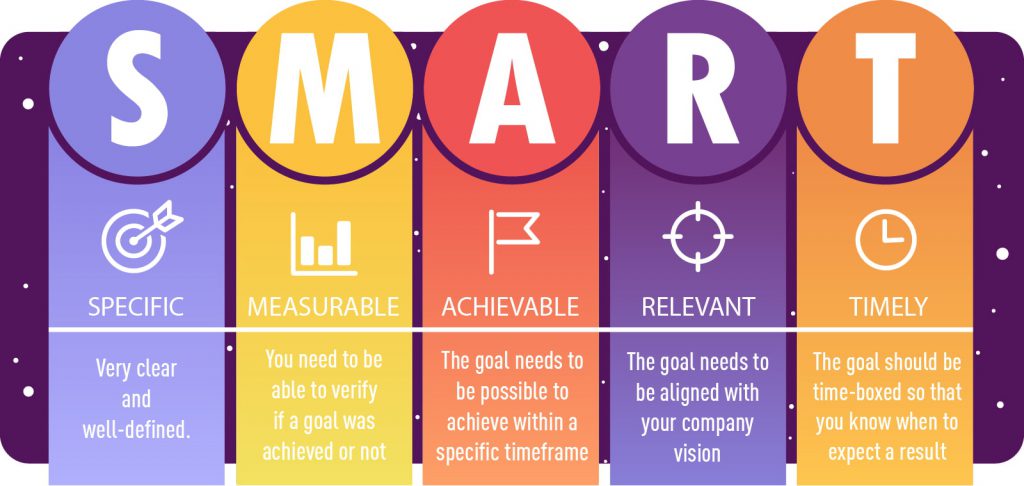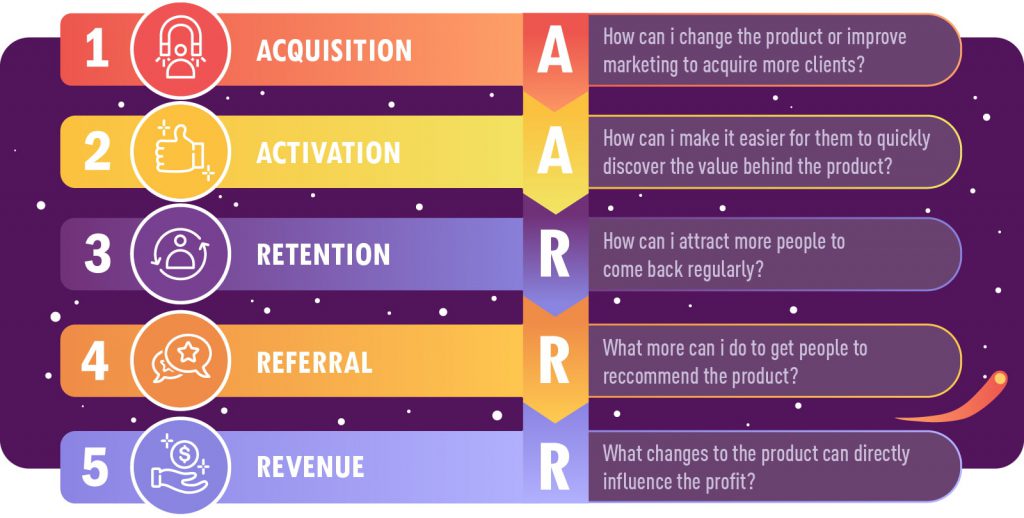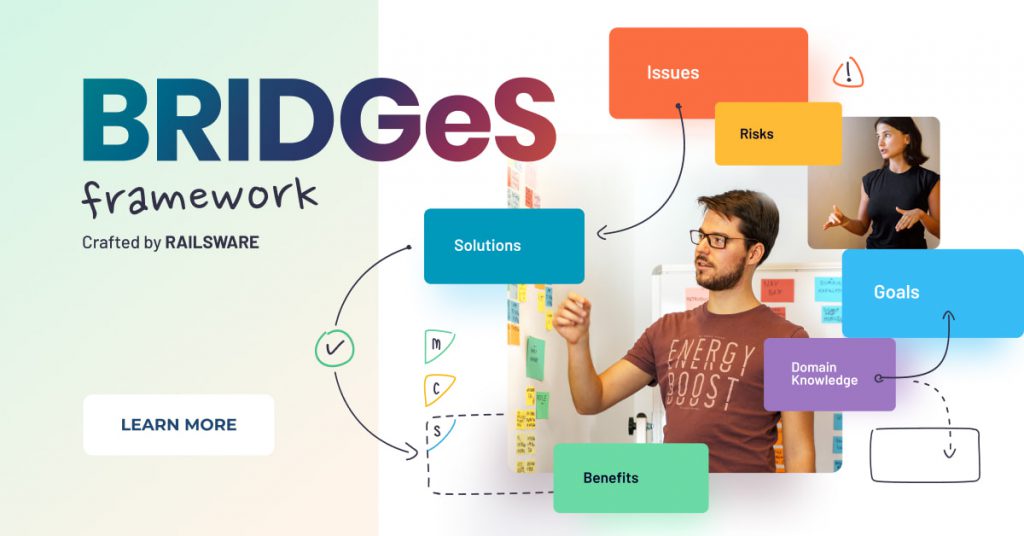Startups, established businesses, and even huge corporations constantly innovate and improve their products. They try to gain a competitive advantage, distinguish themselves from competitors, or just make their clients happy. Whatever the motivations, being able to pick the right product improvements and delivering them on time is a crucial factor for building successful products.

What is product improvement?
Product improvement is the process of enhancing existing features of a product or implementing new functionalities. Typically, its aim is to provide more value to existing users or generate more signups among new customers.
Why improve products?
In reality, businesses can have many different reasons for introducing improvements. They want to:
Be viable. When the key features of your product don’t work as expected, users get frustrated. If they’re patient, they can endure a lot, especially if they’ve had prior positive experiences with the products. But if patience isn’t exactly their strongest trait, a few critical errors or 404s here and there will quickly send them into the arms of your competitors.
Such users are nearly impossible to re-engage. They also hurt your company’s reputation, spreading their negative feelings on review sites and discouraging their peers from signing up. And the more complex a product, the more likely failures are to occur. For that reason, it’s worth investing in the product quality from the early days.
Keep up with the times. Technologies age quite rapidly and even the most robust solutions will require an update in the future. Users’ requirements grow, old technologies are phased out, and brand new ones appear. As more and more sophisticated devices and systems are developed, performance tends to suffer.
Rather than only react to failures, smart companies act proactively and upgrade their technology or codebase as new options become available. Even when they don’t face immediate dangers, they realize that running on an outdated infrastructure can seriously derail their future plans.
Explore new opportunities. Healthy businesses always grow. Once the critical issues are addressed, they have more resources at hand to explore new directions. They can develop horizontally, adding new features or expanding the existing ones. This way, they can attract more customers and improve the value that the existing users get from using a tool.
Successful businesses also choose to deliver improved products vertically, exploring different directions, markets, approaches, constantly expanding their portfolio. It’s not always the question of money – new directions can help improve the image of the company, attract quality talent, and engage the team.
We’ll explore the pros and cons of vertical and horizontal upgrades further down the text.
Keep their customers happy. It always feels good being a user of a product that keeps adding new features and getting better. It feels even better when companies listen to their customers and implement features that are desired by the user community. It generates a lot of promoters for the business – people who stay with a company during the good and the bad times and advocate on its behalf.
Naturally, it makes no sense to implement whatever is most requested on user forums and push into the backlog of each new suggestion from the community. We’ll touch more on balancing user and business goals in the following chapters.

Continuous product improvement – why and how?
Every growing company wants to attract new clients, generate more income from the existing ones or simply build an enthusiastic community around their brand. As a result, they continuously improve their products and address different needs of a business with each iteration. Deployment of one feature opens the door for new improvements to be introduced.
This approach in lean technology is known as continuous product improvement and is often referred to as Kaizen (from the Japanese kai – “change”, zen – “good”). It was popularized in Japan in the 20th century and led to the incredible growth of many Japanese enterprises, Toyota being a textbook example.
A healthy company never stops making things better. Virtually, it can also never get to the point where there’s nothing else to improve. If it does, it’s more likely a sign of stagnation rather than a major achievement.
But having lots of ideas in a backlog is just the very first step. The real value for a company comes from the ability to choose the right ones and extract as much value from them, both for the customers and the company. Here, it’s worth keeping in mind the following principles.
Focus on the company goals – don’t try to improve everything
As a business, you certainly have some long-term goals. You want to reach a certain user count or gain a certain market share. You want to cross with ease through another financial milestone or establish yourself as a go-to place for [you choose].
The improvements you set out to implement should be aligned with these goals. If the goal is to reach 10,000 users by the end of the year, your efforts ought to be focused on generating new signups. If you’re losing users at an alarming rate because feature X underperforms (and you have the data to prove it), prioritize the improvements in this particular area.
While deploying these updates, maintaining fast and reliable product performance is crucial for a seamless user experience. Developers on macOS can use macos ftp command line to efficiently manage file transfers, ensuring smoother deployments and better server management that will prevent performance bottlenecks.
If you actively listen to users and monitor their behavior using a social media tracker, you certainly have tons of ideas for future product improvements. Realistically, you won’t be able to deliver at least some of them. And by the time you get to some others, they won’t be relevant anymore, or the priorities will have changed.
Align your short-term plans with your long-term goals and only add to the product roadmap the items that make the most sense at a given time.
Make your goals SMART
Setting the right goals makes prioritizing improvements a lot easier. When developing products at Railsware, we like to use a simple method aptly named SMART.
We know it’s a bit ancient and you’ll see it recommended in 95% of product development articles, but there’s a reason for it: it’s very simple to implement, and it actually works.
SMART is an abbreviation that makes up a set of five principles that each goal should follow. It should be:
- Specific – very clear and well defined, e.g., “<3% churn rate”, “10,000 users on [date]”.
- Measurable – you need to be able to verify whether a goal was achieved or not. “Improving user satisfaction” is a poor example. “5% growth in retention” is a lot better.
- Achievable – it may seem obvious, but the goal needs to be possible to achieve within a specified timeframe. It can (and perhaps should) be ambitious but, ideally, shouldn’t be a moonshot.
- Relevant – the goal needs to be aligned with your company vision.
- Timely – finally, it should be time-boxed so that it’s clear when a certain outcome is expected.

Assess the risks
Devoting your resources (people, money, infrastructure, time, and others) to certain features means taking them away from other functionalities. This inevitably comes with certain risks – unaddressed issues someplace else, a larger codebase that needs to be maintained, diffused focus, or simply a significant financial commitment.
Ultimately, the feature could not work out, costing you a lot of resources you won’t be able to recuperate, and negatively affecting your perception among potential users.
Before committing to any improvements, it’s worth weighing the potential benefits and risks associated with it. You can track your financial turnover and estimate each new product’s ROI with detailed sales funnel planning and data-driven calculations.
Run small iterations
The idea of Kaizen is very much in line with the Agile approach to developing digital products. Rather than design and build a big feature in one, long iteration, it’s a lot better to take baby steps, and deliver one small functionality at a time.
This approach has certain benefits. Small functionalities require a lot fewer resources and bear a much lower risk. They allow the team to remain flexible and adapt to changes. Throughout the project, a team can discover new, possibly simpler ways of addressing a problem. They can experiment with some approaches, quickly discarding them if they fail or implementing them if they succeed.
Finally, delivering a small chunk of work earlier can already bring benefits to the company, be it with increased revenue or higher user retention. And if you’re afraid to deliver a less-than-perfect feature to the market, just remember: most successful products were not built within a single iteration.
A great way make sure each iteration is planned and executed right is using a suitable product management tool. These tools help teams manage the entire product life cycle from a single handy interface.
Also think about organizing a group of beta users to test out new iterations. They will love being the first to try each feature and will provide plenty of truthful feedback. This is a pro tip for leveraging marketing efforts for idea validation purposes (and vice-versa) – but if you want to read more on it, refer to our guide about how to market new products.
Measure the outcome
Last but not least, measuring how your improvements perform is very important. And the sooner you can start doing that, the better. Just as the product improvements should be continuous, so should measuring the results of your work.
This is closely related to the earlier part about SMART goals. Once you’ve figured out what is that that you’re actually trying to achieve, it’s important to specify the metrics you’ll follow throughout the process. As you push new changes into production, you’ll see how metrics change and will be able to evaluate the impact of particular actions.
It’s also important to keep in touch with customers during the process as they’ll often provide a lot of additional contexts. It can be via quick forms popping up in the app, by monitoring support requests, or simply reaching out to the most active users.
How to make a product better
To bring about an improvement to a product, you can basically do two things – add new features or improve the existing ones. Since they’re meant to tackle different problems, it’s worth discussing them separately.
Adding new features
You add new features to provide more value to the existing user base but also to attract new customers. It’s a great opportunity to generate some publicity – write a blog post, invest in some advertising, or re-engage inactive users with some extra motivation to check out your platform.
Most importantly, you need to first figure out what to improve in your product. It can be:
- A brand new functionality that has been heavily requested by your users
- A feature that competitors have and that makes their offer more appealing
- A new approach to solving a common problem that could position your business ahead of the market
- Localization features that would give you access to more markets
- New integrations or new ways of using your software that will open up new possibilities for users
- Additional third-party services included in your platform (e.g., vendors offering complementary products)
Conversations with existing customers can give you an enormous amount of product improvement tips. After all, they’re the ones who will use the feature, who will pay for it, and who will promote it if you deliver on the promise.
Ultimately, you don’t want to simply choose the most requested feature, at least not without asking some questions first. If you ask users if they want a certain feature to be implemented, you’re almost guaranteed to get an overwhelming “yes” for many answers.
But would they actually use it? Would it make a difference in the way they use your product? Is it a must-have or more of a nice-to-have? And, most importantly, is that something they would pay for? There are many things that users would love to have but that wouldn’t influence their buying decision. You want to think twice about whether such features are worth investing heavy resources into.
Horizontal or vertical improvements?
When considering new features for your product, you can either go horizontally or vertically.
A textbook example of a horizontal approach is Amazon. They used to just sell books, and the whole team was involved in that. As the business grew, rather than adding new book-related features, they entered a completely different market and started selling DVDs. They solved one job for a customer and then moved step by step to where they are today.
The advantage of this approach is that you can more easily upsell your existing users. If they already buy one product or service from you, they may be more eager to buy another one, especially if both work well together (e.g., a petrol station offering also a car washing service). It also significantly lowers the marketing costs of the new feature.
On the downside, expanding into new areas creates another front for you on which you need to battle even more competitors. It’s not a big problem if you’re already established on the market – cash flow allows for experiments. It’s more problematic if you’re a startup with a more insecure future.
The horizontal approach is also more resource-heavy and adds additional complexity on all levels of the product development life cycle.
The vertical approach is more suitable for startups and small companies with limited resources. A good example is Facebook, which started off as a simple social networking platform for Harvard students. They kept adding features and improving the performance of the platform until it grew into the world’s most popular social media platform. They have since gone vertical too, mainly via acquisitions (Instagram, Whatsapp, Oculus VR, etc.) but, well, most successful companies eventually do.
There’s plenty of benefits of the vertical approach. The team can stay focused on one thing and just keep making it better. Fewer resources are needed, and it’s easier to target potential users with a limited offering. It’s not hard to define the company vision and product development strategy.
Among the cons of this approach, you’re limited in a way by the size of the market you’re trying to conquer. If the audience you’re targeting is huge (e.g., global population aged 18–65), it’s not a problem at all. If you’re aspiring to sell to a tiny niche, especially geographically specific, you’re bound to hit the ceiling at some point.
Companies that go vertical also can face immense pressure from competitors that offer a much wider offering, especially if the extra offer brings indeed more value to a customer. If, for instance, you start selling WordPress templates, but a competitor offers table templates, hosting, advanced configuration, and support for five other CMS’s (all of these at very competitive prices), you’ll need to do a really good job to convince customers to go with your offer.
Improving existing features
Another type of product improvement is particularly useful when the key features of your app don’t bring the results you would expect them to. They could be overlooked by the majority of users, or perhaps they could be used very infrequently. Perhaps they’re indeed popular, but they don’t generate new sales or aren’t valuable enough to get users to subscribe. Or maybe they’re simply in need of product quality improvements.
In general, improvements to existing products can:
- Add value to the existing features. Frequently, these will be the key features of your app that are widely used and you believe could be the drivers of your growth. With an improvement, you want to make them more valuable for their existing users. For example, to a navigation feature you add new types of maps and additional audio guidance.
- Improve the frequency of use of particular features. This is particularly helpful when you have valuable features that work well but aren’t frequently used by users. You want to give them some more exposure, perhaps connect them with already popular features so users use both on a regular basis. Another option could be a redesign, aimed at making the feature more intuitive to use. For example, a new tab in the menu for accessing this particular feature.
- Activate rarely used features. With those, you target users who don’t use a particular feature but, you believe, they could extract some value from it. Often, you also try to reach people who don’t use your product yet, by opening up new ways of using the product. For example, you build a Zapier integration for your app or a Shopify integration for your custom t-shirt printing platform, enabling users to connect it with products they already use.
These can be:
- UX/UI improvements – better, more intuitive flows. Fewer steps needed to achieve common goals, more self-explanatory experience, better visualization of a given process.
- Improved product quality – bug fixing, better performance, smoother transitions. More responsive UI and removed dead ends in the flow. Addressing things that frustrate users and distract them from fully enjoying your product.
- Better discoverability of features – better positioning of features you want users to use, improved home screen, or the hierarchy of menus.
- Accessibility features – bigger buttons, an alternative to phone support within an app, contrast settings, colors text replacements, etc.
- Better features support – help text and references for complex functionalities, FAQ, or an easier way of reaching the support (both automated and human).
When working on new features or improving existing ones, our team always uses BRIDGeS. BRIDGeS is a flexible decision-making framework that allows us to thoroughly investigate the context, think through, and plan future work in just one session.
Here are the main reasons why we prefer BRIDGeS when working on product improvements over any other tool:
- It provides deep context understanding. There’s no guessing with BRIDGeS. The session allows us to study the matter and find clear answers to the questions “why,” “when,” and “how” to improve or create a new feature.
- It’s versatile and straightforward. BRIDGeS has a very clear session flow and rules, following which we can analyze any matter.
- It allows creating a clear implementation plan. By the end of the BRIDGeS session, we get an actionable development roadmap divided into sprints.
Our team uses BRIDGeS to build strategies, ideate products and features, improve company’s operations, and make day-to-day decisions. Find out how BRIDGeS helped us create a 3 billion product Calendly and what benefits it can bring to your company.
AARRR framework (with examples)
Any improvement that you go with should address a certain part of your sales funnel. At Railsware, we use the AARRR framework both for our own products and those we develop with our clients. It gives us a clear overview of the process each user should take, lets us easily pinpoint where the bottlenecks are, and provides the backbone for data-driven product decisions. We then implement product improvements based on that.
AARRR stands for acquisition, activation, retention, referral, and revenue. Each requires a different approach and different questions to ask yourself when planning improvements.

Acquisition
The acquisition stage is when people just come across your brand, check out the website, compare you with competitors and if everything looks good, create an account or place the first order.
Ask yourself: How can I change the product or improve marketing to acquire more clients?
One most recent improvement to this stage was for our product, Coupler.io. Coupler.io is used to pull sets of data from many different apps into destinations such as Google Sheets or MS Excel. Each new integration opens up an opportunity to engage users of a different app and makes Coupler a more universal tool.
Recently we added integrations with Shopify and Trello. Each of them brought to Coupler.io an additional 4% of signups each month. And while their conversion to revenue is still low, the main purpose of those additions was acquisition. We have reached our goal and continue to execute the strategy of adding one new integration each month.
To automate the process of selecting new integrations, we’ve built a tool that does it for us. It scores integrations based on many different parameters, such as search statistics, a number of support requests, Google href statistics, direct requests, customer development calls, and so on. Our selections are more data-driven, and it’s driving better acquisition rates among users.
Activation
This stage is the first experience a customer has with your product. They sign up, log in for the first time, and start exploring a product. If they don’t find anything of value to them, they might never return. It’s also the stage where you want to increase the activation of the rarely used features to increase the value users get from your product.
Ask yourself: How can I make it easier for them to quickly discover the value behind the product?
Last month, we introduced an improved first-time experience at our other product, Mailtrap. Mailtrap is an email testing service – once a tiny tool for developers, these days it is one of the most popular email testing tools with over 700,000 users on board.
Some of these users sign up but never even send an email into Mailtrap. Since this is the core functionality of the platform, we consider it vital for discovering the value of the product and understanding how Mailtrap works.
Yet, about 35% of users in the recent cohorts weren’t even doing that. There could be many possible reasons for that – some may have misunderstood what Mailtrap does, others get it but don’t find value in it. We have a strong hypothesis that many also don’t understand how sending an email into Mailtrap works. And this is something we could definitely help them out with. We’ve introduced a number of changes:
- We redirect users right into their Mailtrap inbox on sign in.
- We renamed the default inbox from “Demo” to “My Inbox” to make it very clear that this is their place for testing emails and not just a built-in sandbox.
- We highlighted what they need to do in three simple steps.
- We produced an intro video and started displaying it on the first visit.
- We simplified sending the first email, making it as easy as pasting a shortcode into the console.
As a result, the activation rate grew by 3.1%. It also bolstered our efforts in the following stage, improving the percentage of returning customers by 2.45%.
If you want to connect your Mailtrap account or any other ESP account to WordPress, we recommend using the best SMTP plugin for WordPress, such as Post SMTP, WP Mail, Fluent SMTP, etc.
Retention
This stage is about how frequently people come back to use your product. Some won’t come back at all after the first login. Others will use the product very infrequently and won’t find a justification for financial investment.
Ask yourself: How can I attract more people to come back regularly?
Revenue
Finally, users become customers, pay for subscriptions, or buy from you regularly. They promote the product, use it regularly, and nearly can’t live without it.
Ask yourself: What changes to the product can directly influence the profit?
Referral
At this stage, people use your product regularly and clearly get the value out of it. They also spread the word about it, attracting more people to sign up or buy.
Ask yourself: What more can I do to get people to recommend the product?
It doesn’t necessarily have to be about adding new features. For us, it was about creating exceptional customer support.
We hired some of the friendliest people in the world and got them excited about our products. They became integral parts of the product teams, and we taught them everything there was to know. Quickly, they began spreading their enthusiasm and helping customers find their way around our products.
They weren’t alone in this. From the early days of Coupler.io, product managers, QA engineers, and almost everyone on the team were involved in support. It allowed us to quickly answer even the most complex questions. It gave us tons of feedback and made it so much faster to solve issues and add the features that customers truly craved.
While it’s usually difficult to assess the exact results of such efforts, we believe it has had a solid influence on customer retention and the number of new signups.
What’s next?
Once you’ve figured out what needs improvement, you’ll probably generate tons of product improvement ideas, ranging from small copy tweaks to full-fledged features. The next step is to figure out the priorities and pick the improvements that will make the right impact. BRIDGeS and one of the feature prioritization technique will help you with that.
There are many prioritization techniques that help you categorize each idea and put them all in the right order. We frequently use MoSCoW, but we are also big fans of the more sophisticated Kano Model. The former helps you divide potential improvements into “Musts”, “Shoulds”, “Coulds”, and “Won’ts”, and prioritize them accordingly.
Prioritization is a much bigger topic, though, so we covered it separately in our guide to feature prioritization.
Thanks for reading!

